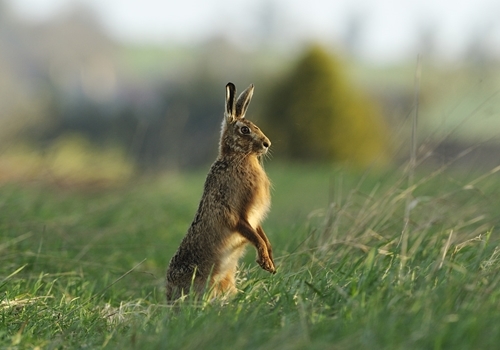Written by Matt Goodall, GWCT Wales Advisor
1 Minute Read

Photo Credit: Laurie Campbell
Brown hares are naturalised but not strictly native to the UK. However, the Mad March Hare seems as part of the furniture as any other species in the British Countryside, leading to the debate of how long does a species have to live here to be considered native? At best guess they were introduced by the Romans and were abundant, however since the 1960s they have suffered a 75% decline.
- Brown hare thrive in a mixed farmed landscape. Introducing grass leys and grazing back in to arable farming or vice versa will benefit your local hare population.
- Control foxes all year-round. Hares may become pregnant from February and can have three to four litters a year until September. However, one fox family can eat the entire production of the local hare population.
- Try to create a ‘patchwork quilt’ landscape with different crops in adjacent fields as hares need to move between fields to get the best grazing in the right season.
- Create areas of wild bird seed mix or pollen and nectar mixes to break up the landscape. Leave unproductive areas uncut for leverets to hide in and cut silage fields from the middle outwards so hares can escape.
- Get involved or create a poacher watch group with your neighbours and local farmers. Contact the local police wildlife crime officer to report and get help with poachers.
Did you know?
When you disturb a group of hares boxing at this time of year it is often the female boxing to defend herself from the attention of an infatuated male. The behaviour is displayed throughout the breeding season and over several months.